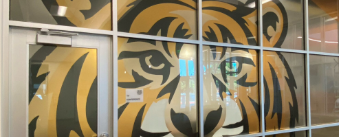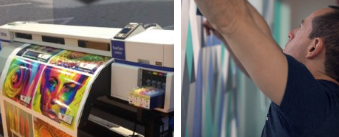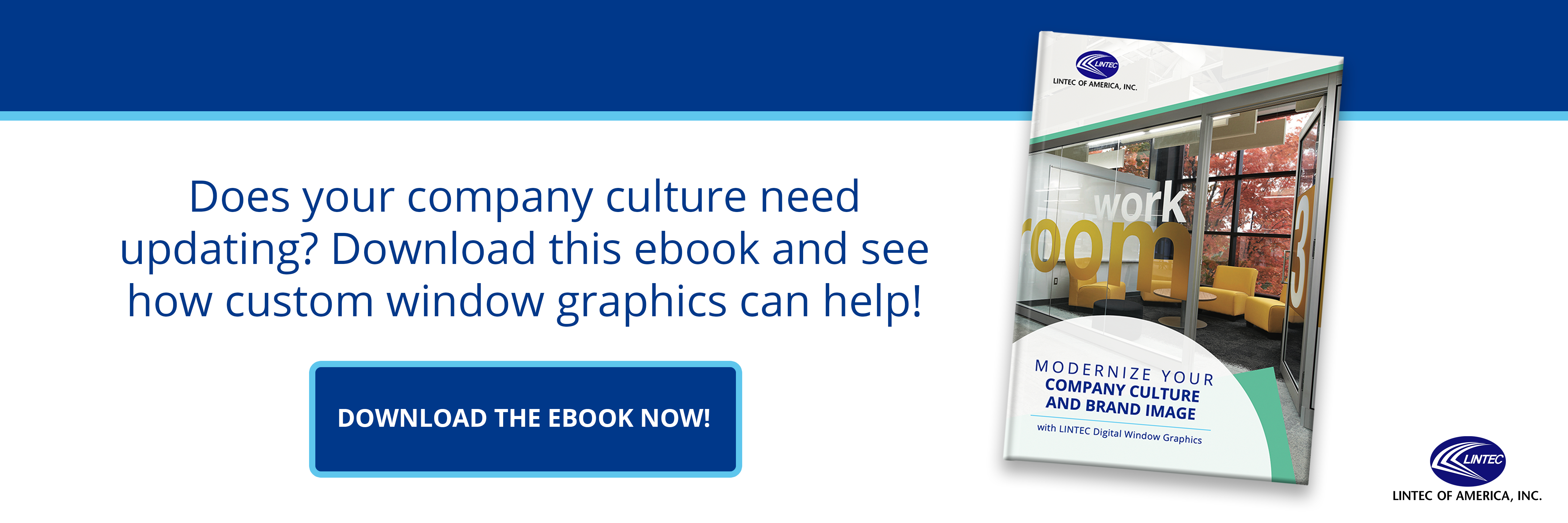
Recycled polyester is gaining traction across architectural and design spaces, including new sustainable films for decorative graphic applications. Specifiers are leaning into environmental goals with quality, recycled polyester films that offer a compelling balance between performance, aesthetics, and social responsibility.
If your building is aiming to earn LEED credits or satisfy ambitious ESG initiatives, rPET could be just the ticket. Here are some of the key benefits of recycled polyester as the material of choice for printed window films:
1. Reduces Waste, Conserves Resources
Recycled polyester is made by processing post-consumer plastic (often from bottles and packaging) into usable fiber and film. Every bottle diverted from trash bins into recycling plants is less material heading into a landfill and less reliance on petroleum-based virgin plastics. On top of the obvious benefit of reducing waste, rPET production uses up to 60% less energy than producing virgin PET, so you’re saving energy, too. Recycled films offer a direct path to reducing your project’s overall environmental impact.
2. Cuts Emissions in Production
Recycled polyester production works wonders in reducing GHG emissions vs. the manufacturing of virgin polyester. Research has shown that rPET manufacturing creates 79% fewer greenhouse emissions than Virgin PET. That’s less than a quarter of the carbon footprint!
Fewer emissions translates into positive reports for ESG goals for your building materials, which matters on carbon-conscious projects.
3. Delivers the Same Optical Clarity and Durability
The biggest question designers ask when comparing recycled PET to virgin material is: Will it look and perform as well as standard polyester? For the ECO Series of recycled polyester films from LINTEC, the answer is yes. These films are optically clear, available with scratch-resistant coatings, and compatible with UV inkjet printers, just like their non-recycled counterparts! There’s no need to trade performance for sustainability.
4. Contributes Toward LEED Certification
Recycled polyester films can support LEED certification under categories like Material Ingredients and Environmental Product Declarations. That’s valuable for firms working on projects that require formal sustainability documentation. Designers, architects, and building owners can prioritize recycled content when specifying materials to demonstrate transparency and commitment to circular design practices.
5. Affordable for Budget-Conscious Sustainability
Unlike many other eco-friendly building materials, recycled polyester window films are price-competitive with traditional polyester films. It’s always easier to justify sustainable choices to clients and budget holders — especially in retail, education, and large-scale commercial builds — when the prices match. What is there to lose? You can deliver green impact without changing the price tag.
6. Versatile for Corporate, Retail, and Architectural Settings
These films suit a wide range of environments: glass-wrapped office buildings, boutique storefronts, college campus atriums, you name it. They’re ideal for temporary displays, permanent installations, privacy applications, and bold branding graphics. Designers today are already counting on recycled polyester films to meet both creative and environmental objectives in a single specification. Take a closer look in this free eBook!
Want Sustainability & Optical Clarity? Just Ask.
Recycled polyester window films help reduce impact and meet sustainable certifications, and you can achieve this with 100% clarity and the same quality you’ve always expected. High-end clients will be impressed with the performance and affordability of 100% recycled printable window films. They’re a smart fit for any project that values design and the environment.
Our ECO lineup is ready to ship, with no added tariffs, stocked right here in the U.S.! Get your free swatchbook to see them in person or ask for a quote today!



